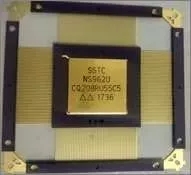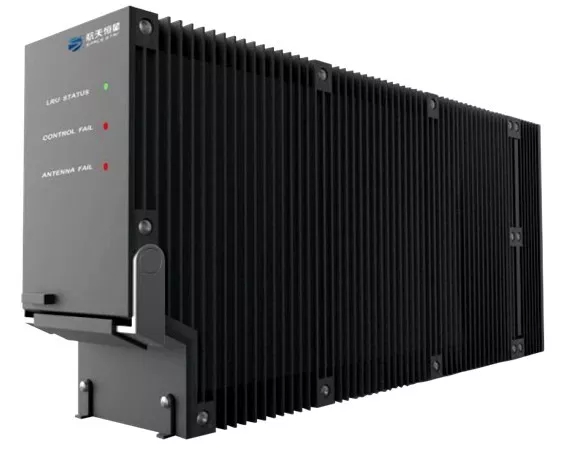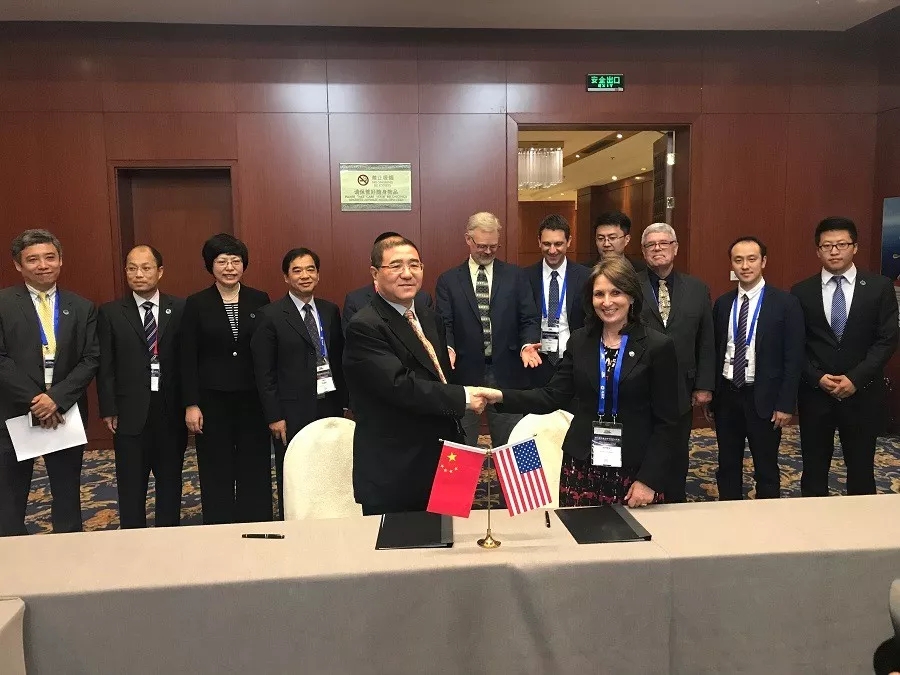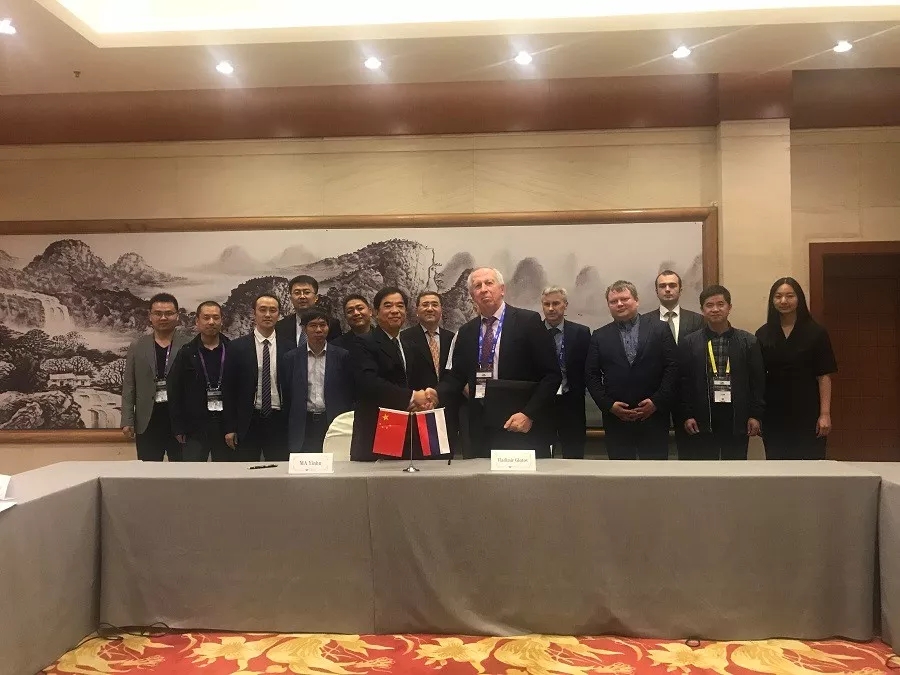With Beidou navigation, how can there be no "China core" – State-owned Assets Supervision and Administration Commission of the State Council
"Lack of core" is a difficult hurdle that cannot be circumvented and must be overcome for China’s high-end manufacturing. In the construction of major aerospace projects, Chinese astronauts have always worked hard to develop and use self-controllable chips to improve the localization rate of core components of aerospace products.
At the 9th China Satellite Navigation Academic Annual Conference held from May 23rd to 25th, China Aerospace Science and Technology Corporation Co., Ltd. showcased a series of Beidou satellite navigation system and application new products, including new aerospace-grade chips. At the same time, it also led talks with the United States, Russia and other countries in the field of civil service and monitoring and evaluation of satellite navigation systems, achieving important results.
Let "China Star" receive navigation signals with "China Core"
At the annual meeting, the Fifth Academy of Aerospace Science and Technology Group released two "Beidou artifacts", one is the first domestic aerospace-grade application multi-frequency multi-mode navigation SOC chip "Hengxin" with independent intellectual property rights, and the other is the domestically designed "Beidou Wing" airborne SBAS multi-mode receiver.
"Hengxin" is the core chip of navigation solution processing, which can be compatible with receiving navigation signals from four major systems such as Beidou. It can provide high-precision position, speed, and time information for satellites, and also has image processing functions.

"Hengxin"
In order to achieve the positioning of high-speed motion carriers in space, a device needs to be installed on the motion carrier to receive signals for positioning. The previous positioning device was a large device with high power consumption, but now "Hengxin" has integrated most of the functions of a device into a small chip. It is powerful and small and chic, which can not only realize the positioning of the device but also expand the functions of real-time orbit determination. The new generation of chips includes all the functions of the original chip architecture, and the volume power consumption is reduced by 60%.
"Hengxin", as a supporting stand-alone machine, achieved its first flight verification through the commercial satellite constellation. At present, the Aerospace Star Navigation Division has followed the wave of Beidou global networking construction and invested in the research and development of a new generation of navigation chips, aiming at the industrial application of Beidou, and further promoting the technological innovation and upgrading of navigation chips.

"Beidou Wings" Airborne SBAS Multimode Receiver
The "Beidou Wing" airborne SBAS multi-mode receiver is one of the most important parts of the aircraft avionics system. The end point is based on the construction of the Beidou system. By receiving various positioning correction information from navigation satellites, it can realize high-precision positioning functions, meet the requirements of civil aviation passenger aircraft in different flight stages, and break the monopoly of foreign airborne end points. Its short message function can also assist airports in dealing with emergencies.
The Ninth Academy of Aerospace Science and Technology Group also showcased four application scenarios such as satellite navigation applications, satellite navigation payloads, Beidou ground operation control system, and high-precision land-based navigation system at the annual meeting, and showcased more than 20 sets of satellite navigation application products such as self-developed baseband chips, navigation anti-jamming products, multi-system high-performance satellite navigation signal emulators, multi-mode satellite navigation receiver OEM boards, and multi-mode satellite navigation receivers.
Join hands with the United States and Russia to make Beidou navigation services better and better
During the annual meeting, the China Satellite Navigation System Management Office held bilateral cooperation talks with the satellite navigation authorities of the United States GPS, Russia GLONASS and the Arab League. As the leader unit of the Sino-US satellite navigation cooperation "Civil Service" and the Sino-Russian satellite navigation cooperation "Monitoring and Evaluation" working group, the Ninth Academy of Aerospace Science and Technology Group led the talks with the US Department of Transportation, the Coast Guard, the Central Machinery Manufacturing Research Institute of the Russian National Space Corporation and the Arab Maritime Academy in the field of civil service and monitoring and evaluation, and achieved important results.
In terms of Sino-US cooperation, the two sides reached a consensus for the first time in the field of civil service cooperation: the two sides will establish an information exchange mechanism and jointly carry out service performance evaluation for Beidou and GPS, and are committed to jointly providing better information support for global Beidou and GPS users, and jointly build a more transparent civil service system for satellite navigation systems.

In terms of Sino-Russian cooperation, on the basis of the established "Sino-Russian Satellite Navigation Monitoring and Evaluation Service Platform", the two sides will continue to carry out practical and effective work, continuously enrich the content of the platform, provide more complete information support for global Beidou and GLONASS users, and further enhance the global scientific research community, public users and equipment manufacturers’ experience of using Beidou and GLONASS.

The civil service and monitoring and evaluation of the Beidou system is one of the important working mechanisms in the operation and service stage of the system. It is an important area in which the Aerospace Science and Technology Group plays a key role in the Beidou satellite navigation system in our country in addition to the construction of the Beidou system. The development of international cooperation in this field will be conducive to the expansion and application of Beidou in the global infrastructure.
Experts from the Aerospace Science and Technology Corporation also held talks with the Arab Maritime Academy to discuss the development of Beidou/GNSS test and evaluation technical cooperation and Beidou user information service cooperation in the Arab region. The two sides plan to jointly conduct Beidou-3 user experience evaluation along the southern Mediterranean region in October this year, providing important data support for Beidou-3 to start initial operation services at the end of the year, and providing users with better Beidou/GNSS information services.
As the main force in the construction of Beidou satellite navigation system in our country, for more than 20 years, Aerospace Science and Technology Group has not only developed Beidou-1, Beidou-2 and Beidou-3 navigation satellites, but also completed the launch mission of navigation satellites with a 100% success rate. It has also made comprehensive efforts in the development of application products and model innovation, and promoted Beidou navigation to serve the national economy and people’s livelihood, enter the lives of the people, and actively carry out international cooperation in satellite navigation systems.
It is expected that by the end of this year, Aerospace Science and Technology Group will complete the launch of about 18 Beidou-3 networking satellites, and the total output value of our country’s satellite navigation and location-based service industry is also expected to exceed 300 billion yuan. It is expected that by the end of 2020, our country will have built a satellite navigation system including 35 satellites to provide positioning, navigation and other services for global users.
[Editor in charge: Li Juyao]